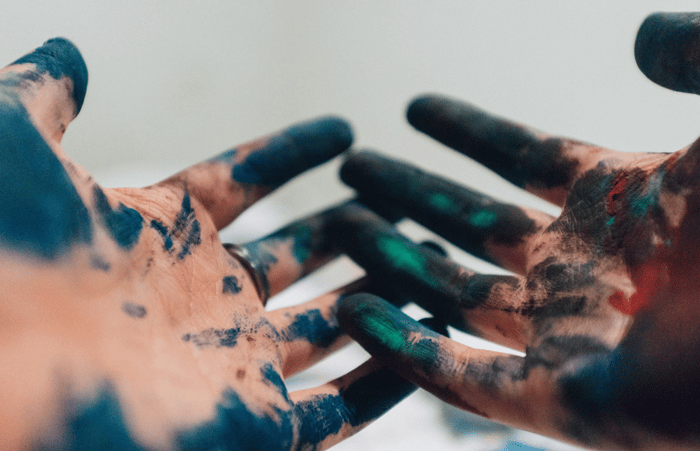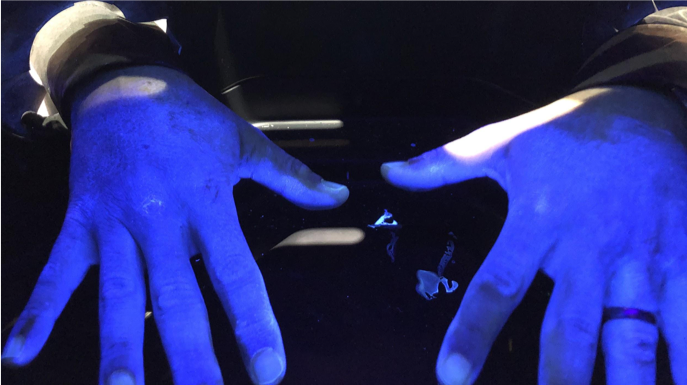The first line of defence against (COVID-19)

You probably use different chopping boards in the kitchen for different food types. For example, one board for raw meat and another board for vegetables. But why is this a good practice, because it helps to prevent cross contamination?
We use our hands for everything we do from eating to using the bathroom. So it is no surprise that up to 80% of common infection causing microorganisms are transferred via contact. Gloves are not the answer because they are porous and can only provide a barrier to gross contamination. Our number one line of defence against infection is correct and thorough Hand Hygiene.
There are whole colonies living on our hands
Price(1938), established that there were two distinct categories of microorganisms living on the hands. These include:
Resident flora (resident microbiota), the most dominant species, Staphylococcus epidermidis, is found under the stratum corneum (the outermost layer of the skin that provides the barrier between the body and the environment). The function of these resident flora is protection. They provide microbial antagonism to fight foreign strains of microorganisms. These rarely cause infection.
Transient flora (transient microbiota), colonise on the surface layers of the skin and are more easily removed by Hand Hygiene. They do not normally multiply on the skin but can survive and occasionally multiply if conditions are favourable. Whether these transient microorganisms are transmissible from the hands depends on the species present, the number on the surface and the moisture level of the hands. Hands that are left undried harbour considerably higher levels of microorganisms than those that are dried thoroughly.
Hand Hygiene is the best defence
Hand Hygiene remains the best defence against a wide range of microorganisms but its effectiveness can be limited by how well it is performed. In the dental environment we perform Hand Hygiene frequently and this can sometimes lead to lapses in correct technique if we become complacent. We also rely heavily on gloves.
The gloves we use are porous to approximately 3µm (microns). A seasonal influenza (also a coronavirus) is approximately 80-120nm (nanometers). To put this into context, a human hair is 50-70µm (microns) and a grain of fine beach sand is 90µm (microns). Gloves provide a barrier in addition to good Hand Hygiene in the dental practice and this should be performed prior to donning gloves and also immediately after removal.
Hand Wash or Alcohol Based Hand Rub
Hand Hygiene can be performed in two ways - either with a full hand wash or using an Alcohol Based Hand Rub (ABHR). There are certain times when a full hand wash is indicated such; as prior to starting for the day, after bathroom breaks, prior to meal breaks and if hands become visibly soiled. Correct use of ABHR is a good option at other times such as before and after glove use for patient treatments.
While it is important that the correct Hand Hygiene agent is selected, what is also important is that the process is completed correctly and thoroughly. The Hand Hygiene technique for most people is palm-to-palm with the occasional roll over the knuckles. However, this technique misses critical areas such as the tops of the fingers and fingertips, the interdigital spaces, the thumb and the heal of the hand. When undertaking Hand Hygiene education a fluorescent gel and a black light box is used to demonstrate that these areas are commonly missed.
Areas commonly missed during Hand Hygiene include the tops of the fingers and fingertips, in between the fingers, and around the thumb

Image: Prime Practice
The correct technique for hand washing includes:
- Wet hands with water and apply enough liquid hand wash to cover all hand surfaces
- Rub hands palm to palm, then right palm over left dorsum with fingers interlaced
- Palm to palm with fingers interlaced followed by backs of fingers to opposing palms with fingers interlocked
- Rotational rubbing of left thumb clasped in right palm, and vice versa
- Rotational rubbing back and forth with clasped fingers of the right hand in left palm, and vice versa
- Rinse hands with running water with palms facing down
- Dry thoroughly with a single use towel
- Turn the tap off with the towel
The correct technique for using Alcohol Based Hand Rub includes:
Dispense the recommended amount of ABHR onto the palm of one hand
- Rub hands palm to palm, then right palm over left dorsum with fingers interlaced
- Palm to palm with fingers interlaced followed by backs of fingers to opposing palms with fingers interlocked
- Rotational rubbing of left thumb clasped in right palm, and vice versa
- Rotational rubbing back and forth with clasped fingers of the right hand in left palm, and vice versa
- Continue for a minimum of 20 to 30 seconds
Hand Hygiene practices require constant monitoring in healthcare environments, including dental practices. The most important factor in good Hand Hygiene compliance is behavioural so regular monitoring of team habits becomes a critical part of good Quality Assurance Programs. Quality Assurance Programs include annual (minimum) auditing of the processes for Infection Prevention & Control within the dental practice.
The current global health emergency with the outbreak of the novel (COVID-19), has raised awareness of the need for good Hand Hygiene as the first line of defence as scientists learn more about the virus’s methods of transmission and the length of time it remains infectious.
In our previous blog, Coronavirus Infection Explained, we talked about a virus’s need for other cells to be able to survive and replicate. If we are using good Hand Hygiene practices, both in our dental practices and in public, we can substantially impact any virus or bacteria from being able to spread.
Price P.B., (1938). The bacteriology of normal skin: a new quantitative test applied to a study of the bacterial flora and the disinfectant action of mechanical cleansing. Journal of Infectious Diseases. 1938;63:301–318.)
It is crucial to protect our patients, ourselves and the practice. Join us for our Live-Online Training Session where we talk about current updates and recommendations to Get Safe. Be Safe & Stay Safe.


